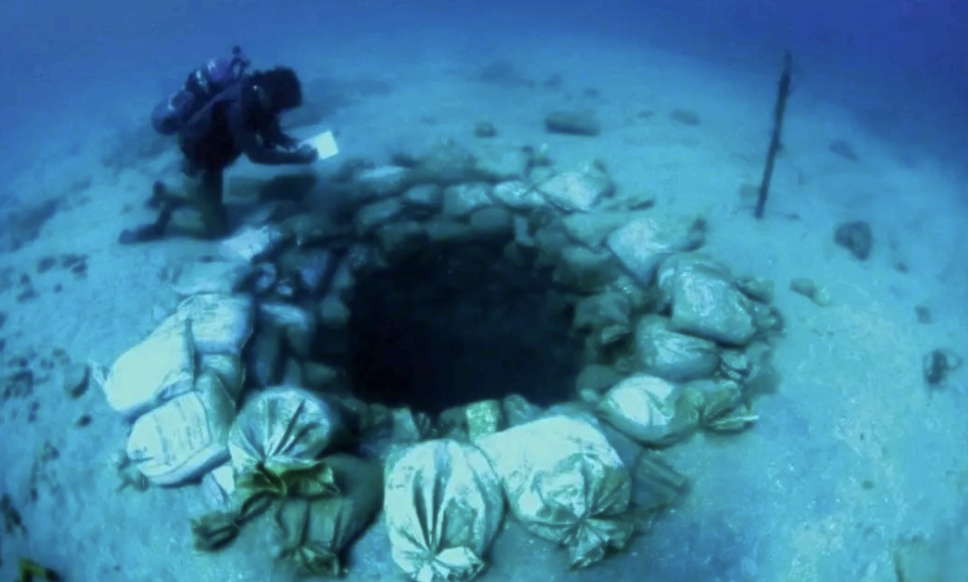Exploring the Mysterious Depths of Atlit Yam: Revealing a 9000-Year-Old Sunken Neolithic Settlement

In the tranquil waters off the coast of Atlit, in the Levantine Sea, lies a hidden treasure from the past. Beneath the gentle waves, at a depth of 8 to 12 meters, the submerged Neolithic village of Atlit Yam rests in eternal slumber, veiled by the sands of time.
Around 9000 years ago, long before the rise of the great civilizations that would dominate history, a thriving community made their home in what is now the bottom of the sea. The villagers of Atlit Yam led a life interwoven with the rhythms of nature, their days marked by the ebb and flow of the tides and the changing seasons. They built their houses from stone and clay, nestled together in a close-knit settlement that echoed with the sounds of daily life – the laughter of children, the chatter of families, and the hum of communal work.

Central to the village was a remarkable stone semicircle, an awe-inspiring structure of seven megaliths, each weighing around 600 kilograms. The purpose of this enigmatic formation remains a mystery, but its presence speaks to a profound connection with the spiritual or the astronomical, a testament to the villagers’ sophisticated understanding of their world.
Among the fascinating discoveries made by underwater archaeologists was a well, a lifeline that provided fresh water to the inhabitants. This well, painstakingly constructed, hints at the ingenuity and resourcefulness of the villagers who knew how to harness the natural resources available to them.

But Atlit Yam holds more than just architectural marvels. The excavation unearthed human skeletons that tell a poignant story of ancient life and death. These remains revealed the earliest known cases of tuberculosis, offering invaluable insights into the health and challenges faced by these early people. The presence of the disease in such an ancient context suggests that tuberculosis has been a silent companion of humanity for millennia, influencing the course of our history in ways we are only beginning to understand.
The discovery of Atlit Yam is a window into a world long lost, a civilization that thrived in harmony with nature before being swallowed by the sea. The village was likely abandoned due to a sudden rise in sea levels, a catastrophic event that forced its inhabitants to flee, leaving behind their homes and their history to be preserved by the ocean.

Today, Atlit Yam continues to captivate the imagination of archaeologists and historians, each dive into its depths peeling back another layer of our shared human past. The village is a submerged testament to the resilience and ingenuity of early humans, a reminder of the enduring legacy of those who came before us.
As the waters of the Levantine Sea gently lap against the shore, the story of Atlit Yam remains alive, whispered by the currents and carried by the tides, a timeless echo of a vanished world.











